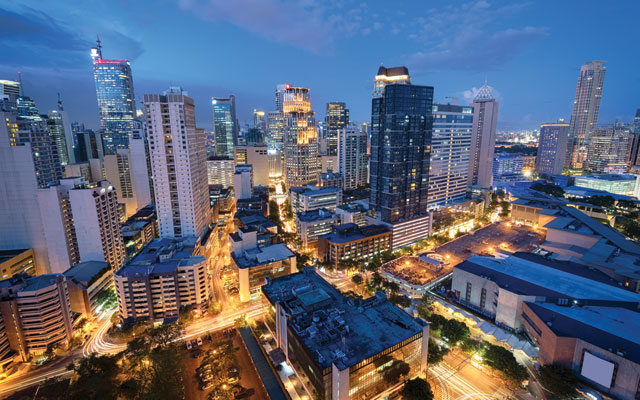Private sector efforts are helping to blast the Philippines back to its heyday of strong inbound business events performance
While the Philippines has not kept abreast with its Asian neighbours in drawing international business events, milestones over the past decade are lifting it closer to its aspiration of reclaiming its place as one of the region’s premier destinations.
As an archipelago of 7,641 islands, the Philippine challenge is to make them accessible and connected by air, land and sea domestically and at least regionally, which is gradually taking place.

Another milepost is the private sector efforts in building convention centres not just in metro Manila but in other urban destinations too, in the absence of government investment. SMX Convention Centre, for example, has invested in eight convention centres all over the country and more are forthcoming while the Iloilo Convention Centre and the Marriott Grand Ballroom are also birthed from private sector money.
Agnes Pacis, vice president-sales and marketing, SMX Convention Center, explained: “We would like to place the Philippines in the global market, as most of the events happening in the Philippines are still local”.
The shortage of accommodation is also being addressed as inbound traffic grows, with more homegrown hotel brands being developed and proving to be steady competitors of international brands.
For one of the most successful homegrown hotel brands, Seda, the strongest business events markets are mainly from Asia – Japan, South Korea, Singapore and Taiwan, according to Seda Hotels group director of sales and marketing, Melissa Carlos. The US is a strong source market too, outside of this region.
Carlos said “healthy economies which mean more disposable income that creates opportunities for MICE, cooperation among countries in the region, intellectual development, and IT accessibility” can expand Asia-Pacific’s business events potential.
While the Philippines has a yoyo love-hate relationship with China, Duterte administration has cast a rosy light on the two since 2016. China’s former ban on its citizens travelling to the Philippines has been replaced by an open season, with both business and group travellers from the mainland becoming the Philippines’ second biggest source market.
The business events sector has not fully taken advantage of this coy relationship that is shoring up the real estate markets and hotel occupancies, but the industry is starting to see events coming from China.
Another milepost is Boracay’s six-month closure last year for its continued rehabilitation, stalling business events particularly incentive trips and corporate meetings. However, the bold move demonstrates the government’s commitment to cleaning up destinations. Hopefully, lessons learned from Boracay will not be lost on other areas including Bohol and Palawan.
Meanwhile, the biggest development in the country’s business event community is the comprehensive MICE roadmap 2030, detailing how the Philippines can attract more corporate gatherings from Asia and the Middle East a decade from now.
For Tourism Promotions Board (TPB) COO, Marie Venus Tan, the “battle cry is Bid! Bid! Bid!” for international events, create and develop MICE cities including Iloilo and Bacolod, and being in international MICE shows, among other things.
Presently, there is an urgent need for the creation of a national convention and visitors bureau. Right now, there is just a small department within the TPB that takes care of business events; TPB is the marketing arm of the Department of Tourism.
The defunct Philippine Visitors and Convention Bureau was successful in attracting business events, recalled Renato Padilla, general manager of the Philippine Convention and Exhibition Center (PICC). In other countries, cities have their own convention bureau while the Philippines has none, he lamented.
Another tricky issue is the Philippines’ lack of big convention and exhibition centres, which keeps it from taking advantage of the international trend for mega events. The country’s largest convention centres, SMX Manila and PICC, dwarf in comparison with those in other Asian countries but they could no longer expand, said Marisa Nallana, president of PETCO.
“To be more competitive in Asia, we will have to build bigger spaces to accommodate the demand of international events,” she said.





















